Volume 4, Issue 2
Displaying 1-8 of 8 articles from this issue
- |<
- <
- 1
- >
- >|
Foreword
-
2008 Volume 4 Issue 2 Pages 145
Published: 2008
Released on J-STAGE: April 28, 2009
Download PDF (115K)
Articles
-
Article type: article
2008 Volume 4 Issue 2 Pages 146-153
Published: 2008
Released on J-STAGE: April 28, 2009
Download PDF (315K) -
Article type: article
2008 Volume 4 Issue 2 Pages 154-174
Published: 2008
Released on J-STAGE: April 28, 2009
Download PDF (562K) -
Article type: article
2008 Volume 4 Issue 2 Pages 175-206
Published: 2008
Released on J-STAGE: April 28, 2009
Download PDF (509K) -
Article type: article
2008 Volume 4 Issue 2 Pages 207-223
Published: 2008
Released on J-STAGE: April 28, 2009
Download PDF (337K)
Special issue
-
Article type: preface
2008 Volume 4 Issue 2 Pages 224
Published: 2008
Released on J-STAGE: April 28, 2009
Download PDF (100K) -
Article type: report
2008 Volume 4 Issue 2 Pages 225-236
Published: 2008
Released on J-STAGE: April 28, 2009
Download PDF (309K) -
Article type: report
2008 Volume 4 Issue 2 Pages 237-245
Published: 2008
Released on J-STAGE: April 28, 2009
Download PDF (232K)
- |<
- <
- 1
- >
- >|
